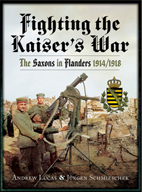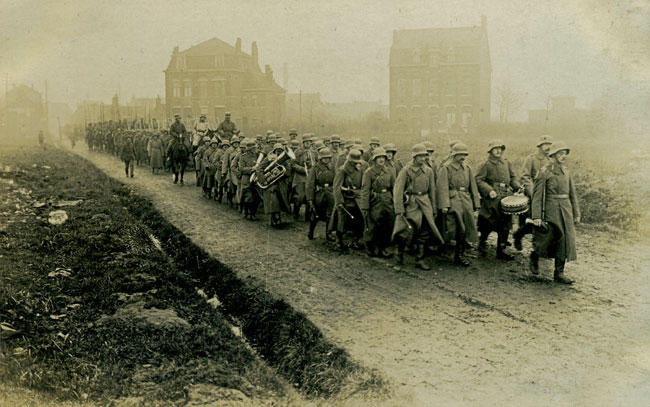CHAPTER 12 is devoted to the cemeteries and monuments of the Saxon Army in Flanders, including the stories of the fallen and an unusual personal account from a wartime regimental graves registration officer. Like all German contingents, the Saxons put enormous effort into recovering, interring and memorialising their dead in elaborate (often unit-specific) cemeteries behind the front. These were fully intended to be just as permanent as those created on foreign soil in previous wars, even as their number and size increased beyond all expectation.
Tragically most of these efforts were swept into oblivion, first by the devastation later in the war of what had once been safe rear areas, and then by the ruinous post-war demands of rent for large swathes of foreign territory ruled by inevitably unsympathetic governments. Hence this chapter offers an insight into an immediate culture of remembrance which has almost entirely disappeared, the remarkably individual and aesthetic grave markers and monuments favoured by the soldiers themselves having now been replaced by the bleak near-anonymity of the concentration cemeteries.
It also touches on the fate of those whose families were wealthy enough to repatriate their remains for burial in Saxony. Such individuals were almost invariably officers, but even for the higher ranks the practice was never universal. Many quite senior Saxon commanders are still buried alongside their men in Belgium and France to this day.
Above: This undated photo shows an Offiziersstellvertreter of IR 133 (or possibly RIR 133) contemplating a devastated civilian cemetery somewhere in northern France.
Above: This is one of a series of photographs depicting the funeral of Major Lucas Kirsten of Kgl. Sächs. 12. Infanterie-Regiment Nr.177. This highly decorated regimental commander (a veteran of the Boxer Rebellion and Southwest Africa, and recipient of both the Ritterkreuz and Komturkreuz 2. Klasse des Militär-St. Heinrichs-Ordens) was killed by a sniper at Warneton on 10th December 1917.
Following a service in the church at Bousbecque (depicted in a photo on p.243 of 'For King and Kaiser'), Major Kirsten's body was transported with full military honours to the railhead for shipment to Saxony at his family's expense. As seen here, the procession not only included his own regiment but also a large contingent of cavalrymen - most likely from 4. Eskadron / Kgl. Sächs. 3. Husaren-Regiment Nr. 20 (the organic cavalry squadron of IR 177's parent 32. Infanterie-Division). There may be a connection here to the fact that the major was himself originally a cavalry officer, having begun his career with Kgl. Sächs. 3. Ulanen-Regiment 'Kaiser Wilhelm II., König von Preußen' Nr.21.

Above: Sample pages from For King and Kaiser (chapter 12).
- << Prev
- Next







